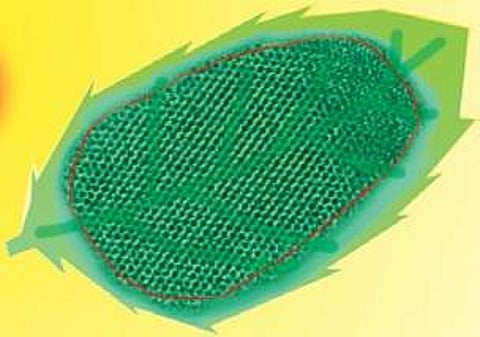

BENGALURU: Researchers at the Indian Institute of Science (IISc) have developed an artificial leaf that absorbs carbon dioxide in the atmosphere to generate fuel and release oxygen in the process, simulating the process of photosynthesis. The development is being viewed as a credible candidate in tackling global warming and climate change while keeping the atmospheric carbon dioxide levels in check.
The researchers claim this to be a classic way to achieve two things at the same time: It provides an ideal opportunity to use this artificial leaf as a source of renewable energy, while significantly reducing the carbon footprint from the atmosphere, releasing more oxygen in the process.
IISc’s Solid State Structural Chemistry Unit researchers in the study titled ‘The Quantum Leaf for Artificial Photosynthesis’ tout it to be “100 times more efficient” than a natural leaf in absorbing carbon dioxide.They say it is composed of “completely biocompatible, earth abundant, inexpensive elements”.
Biswajit Bhattacharyya, the student at the Unit who is the first author of the study, told The New Indian Express, although several attempts have been made worldwide to replicate photosynthesis, Quantum Leaf developed at IISc is the most efficient device using sunlight to convert carbon dioxide (CO2)to oxygen.
“This is the most energy-efficient method to convert carbon dioxide into fuel and oxygen using only sunlight. While most plants convert less than one per cent of the available solar energy into chemical energy, the material developed by us can convert about 20 per cent of the incident solar energy into chemical energy in the form of fuel and oxygen,” he said. While pursuing this process, the scientists turned to nano-crystals to develop the process of absorbing CO2 from the atmosphere.
Explaining the process, Anshu Pandey, Associate Professor at the Unit, said quantum dots — semiconducting nano-crystals — made of specific materials, act as catalyst to convert CO2 into bicarbonate form to ‘formate’ (derivative of formic acid) that may be used as fuel. On the material used to prepare the Quantum Leaf, he merely said it was made of cheap elements allowing adaptation of the technology in an industrial scale, without providing further details.
“People have tried in the past to replicate the process of photosynthesis. The efficiency observed by us is a major jump over available methods and is close to the maximum efficiency that can possibly be achieved artificially,” he said.